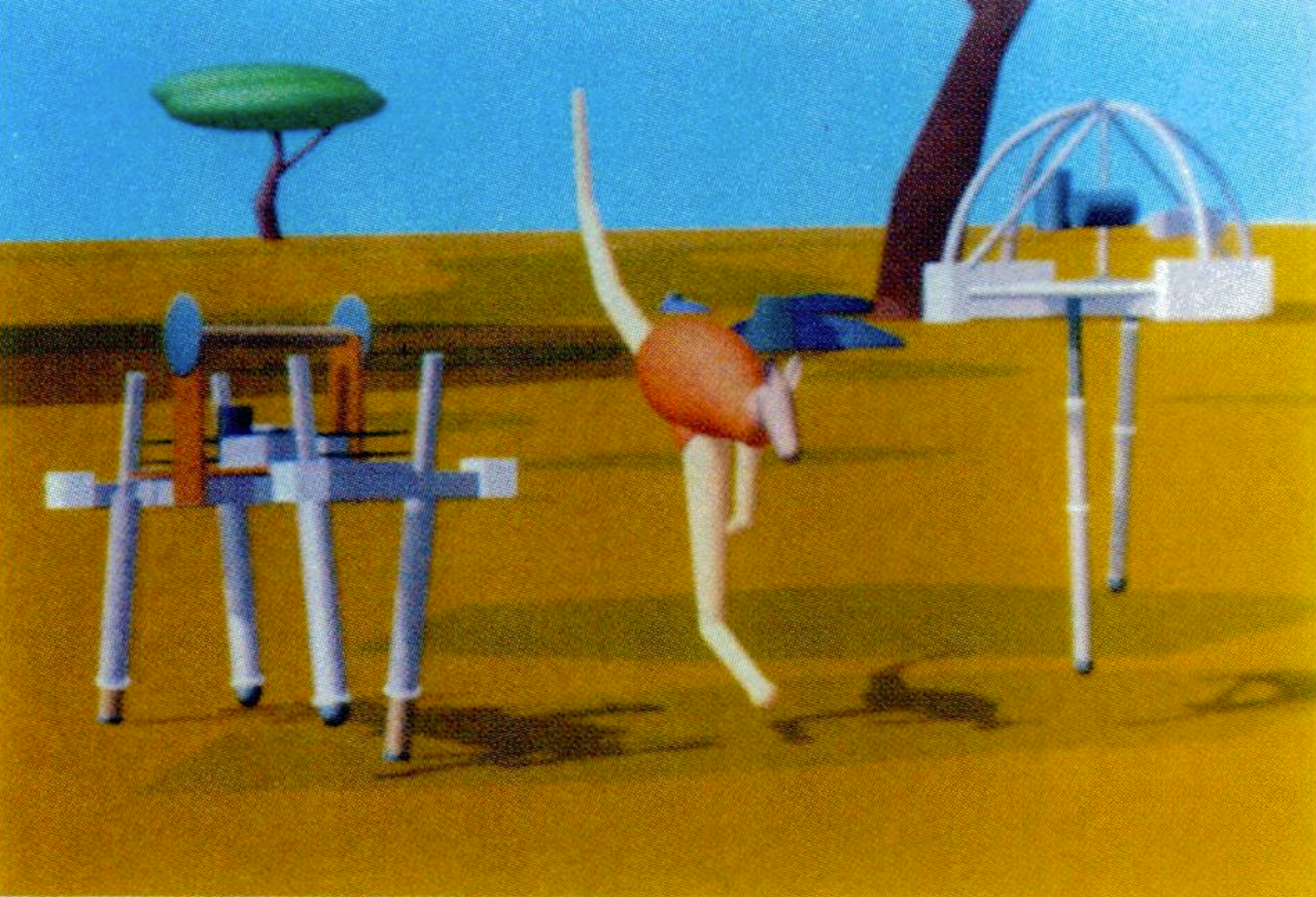“Animation of dynamic legged locomotion” by Raibert and Hodgins
Conference:
Type(s):
Title:
- Animation of dynamic legged locomotion
Presenter(s)/Author(s):
Abstract:
This paper is about the use of control algorithms to animate dynamic legged locomotion. Control could free the animator from specifying the details of joint and limb motion while producing both physically realistic and natural looking results. We implemented computer animations of a biped robot, a quadruped robot, and a kangaroo. Each creature was modeled as a linked set of rigid bodies with compliant actuators at its joints. Control algorithms regulated the running speed, organized use of the legs, and maintained balance. All motions were generated by numerically integrating equations of motion derived from the physical models. The resulting behavior included running at various speeds, traveling with several gaits (run, trot, bound, gallop, and hop), jumping, and traversing simple paths. Whereas the use of control permitted a variety of physically realistic animated behavior to be generated with limited human intervention, the process of designing the control algorithms was not automated: the algorithms were “tweaked” and adjusted for each new creature.
References:
1. Alexander, R, MeN. 1988. Ela,stic Mechani.sms in Ai~.iln.t’/.! ~:~/o~,~~.~(~~.l ((I.’anlbridge University Press’ New York).
2. Alexander, R. MEN., Vernon. A. 197.5. The mechanics of hopping by kangaroos (Macropodidas). ,I. Zoolog.~t (London) 177’26.5-303.
3. Bruderlin, A., Calvert, T. W. 1989. Goal-Directed. Dynamic Animation of Human Walking. (‘om puter Gra.phtcs 23(3):233 242.
4. Girard, M. 1987. Interactive design of 3-I) eompurer animated legged animal motion. IEt:.’E (‘omput~.r Graphic,s and .4 n.imation June 39– 51.
5. Girard, M. and Maciejewski. A. A. 198.5. (:omputat.ional Modeling for the Computer Animation of Legged Figures. 5’tgqrapfi 19(3) 263~-270.
6. Hemami, H., Weimer, F. C., Koozekanani, S. H. 1973. Some aspects of the inverted pendulum problem for modeling of locomotion systems. IEEE Trans. A ulomatic Control AC-18:658-661.
7. Hodgins, j., Raibert, M. H. 1990. Biped Gymnastics. ln~ernalional Journal of Robotics Research, 9(2):115- 132.
8. Hodgins, J., Raibert, M. H., 1991, Adjusting step length for rough terrain locomotion, IEEE J. Robotics and Automation, Sacramento.
9. Hodgins, J., Koeeh|ing, J., Raibert, M. H. 1985. Running experiments with a planar biped. Third International Symposium on Robotics Research, Cambridge: MIT Press.
10. McKenna, M. and Zeltzer, D. 1990. Dynamic Simulation of Autonomous Legged Locomotion. Computer Graphics 24(4):29-38.
11. McMahon, T. A. 1984. Muscles, Reflexes, and Locomotion. Princeton: Princeton University Press.
12. Raibert, M. tt. 1985. Legged Robots That Balance. Cambridge: MIT Press.
13. Raibert, M. H., 1990. Trotting, pacing, and bounding by a quadruped robot, J. Biomechanics, Vol.23, Suppl.1, 79-98.
14. Rosenthal, D. E., Sherman, M. A., 1986. High performance multibody simulations via symbolic equation manipulation and Kane’s method. J. Astronautical Sciences 34:3, 223-239.
15. van de Panne M., Flume, E., Vranesic, Z. 1990. Reusable Motion Synthesis Using State-Space Contro|lers Computer Graphics 24(4): 225-234.
16. Wi|helms, J. 1986. Virya-A motion control editor for kinematic and dynamic animation. Graphics Interface ’86 141-146.
17. Wilhelms, J. 1987. Using Dynamic Analysis for Realistic Animation of Articulated Bodies. IEEE Computer Graphics and Animation June: 12-27.
18. Witkin, A., Kass, M., 1988. Spacetime Constraints. Computer Graphics 22(4):159-168.




